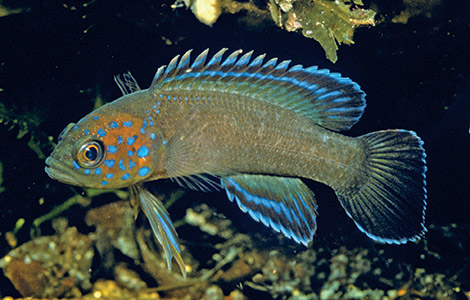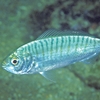General Description
Body moderately long, compressed, head bluntly rounded, mouth reaching to hind margin of eye; dorsal and anal fins slightly elongated posteriorly, almost reaching to the end of the large rounded tail, slender pelvic fins and lateral line in two parts. Head dark grey to orange with deep blue spots, body greyish with faint darker bars, blue lines on fins. To 15 cm.
Biology
This colourful species hides in caves, crevices and under ledges during the day, becoming active at night.
Habitat
Found beneath ledges and in caves on coastal rocky reefs, in depths of 3-35 m.
Reefs
Distribution guide
South-eastern Australia, including western and central Victoria.
Species Group
Fishes › Blue devils and hulafishes
Depth
Shallow (1-30 m)
Deep ( > 30 m)
Water Column
Max Size
15 cm
Diet
Carnivore
Commercial Species
No
Global Dispersal
Native to Australia
Conservation Status
- DSE Advisory List : Not listed
- EPBC Act 1999 : Not listed
- IUCN Red List : Not listed






